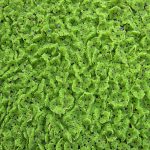
Azolla is a weed that has many uses, including cattle feed. It increases milk yield by 15-20%. It is also used in egg layers and broilers. It is easy to harvest and can be used as a commercial feed source without adding any concentrations. To harvest the azolla, simply wash the plants in a plastic tray with a 1 cm2 mesh size.
Contents
Increased milk yield by 15-20%
Azolla is a plant that provides milk producers with an excellent source of protein. It is rich in minerals and contains appreciable amounts of vitamin A. In addition, it has a very low carbohydrate and fat content. Azolla is also excellent for improving the quality of milk. Its inclusion in feed can increase milk yield by fifteen to twenty percent.
Azolla contains between 25 and 35 percent protein, as well as minerals and amino acids. It is also rich in bio-active substances and bio-polymers. It can be harvested using a scoop net or grown in enclosed floating rings. However, be aware that Azolla is invasive and can clog water lines. Also, dead Azolla can lower the oxygen content in the water for a period of time.
Cost of azolla culture
If you have decided to make Azolla cow feed, you will need to purchase a mother culture. You can either purchase this from an existing Azolla cultivator or an agriculture university. After the culture has grown to maturity, you can harvest the biomass daily. The harvested biomass can be used for cattle feed in either a fresh or dried form. You should remember to clean the biomass thoroughly with water to remove the smell of cow dung.
The production process is not expensive. Azolla is an easy crop to grow and requires very little care. Azolla feed has an extremely high yield and can increase the monthly milk yield of cows by up to 10 liters. However, it takes time for the animals to adjust to its taste. In the initial stages, it is recommended to feed the cows with concentrates until they get used to the taste. If you are concerned about the smell of dung, you should rinse the azolla bed thoroughly with fresh water.
Growing conditions
Farmers can improve yields of Azolla cow feed by boosting CO2 concentrations in the growing environment. Moreover, continuous harvesting of Azolla cultures can increase protein yields without the use of nitrogen fertilizer. However, the high polyphenol content of Azolla plants may limit their use in animal feed. More research is needed to address this issue.
Growing Azolla in a raised bed requires proper conditions and soil management. The bed must be well-drained and be fenced to prevent pest infestation. The soil should be amended every three to four weeks with fresh water to avoid micronutrient deficiency. Moreover, the bed must be cleaned and inoculated with a pure culture of Azolla.
Harvesting azolla
The first step in harvesting azolla for cow feed is to prepare the pond. This must be at least 10 cm deep. In order to prevent the roots from penetrating the pit, it is best to use plastic gunnies. Then, spread a 10 cm deep layer of sieved fertile soil on top. Add about 2 kg of cow dung slurry and 30 g of Super Phosphate to the water. Mix them well. After 10 days, sprinkle fresh water on the azolla plant. The plants will begin to sprout after the watering.
The temperature should be around 30°C when harvesting the Azolla. Using a shade net will help maintain this temperature. It is also important to regularly remove biomass to avoid overcrowding. pH levels should be between 5.5 and 7. Harvested Azolla should be thoroughly washed before use.
Quality of azolla feed
Azolla has a low carbohydrate and fat content. It contains 25 to 35 percent protein and ten to fifteen percent minerals. It is also rich in bio-active substances and bio-polymers. It is an economical choice for dairy farmers. It is not difficult to grow and is a sustainable source of protein.
Azolla is considered to be a high-quality cattle feed substitute. The plant is effective in increasing milk production by 15 to 20%. It also improves feed conversion efficiency and feed conversion ratio. Azolla is also beneficial for reducing the volatilization of N-fertilizer. It is cultivated in rice fields and is often used as a green manure.
Azolla has been extensively studied for its ability to improve the quality of milk. It has also been shown to improve the health of dairy cows. Studies conducted in the Chitradurga district of Karnataka showed that azolla improved monthly milk yield by an average of 10 litres per cow. However, the taste of Azolla can be unpleasant to some dairy cows. Therefore, it is recommended to feed the animals with concentrates in the early stages. It is also necessary to rinse azolla cow feed in fresh water to remove any odors.




